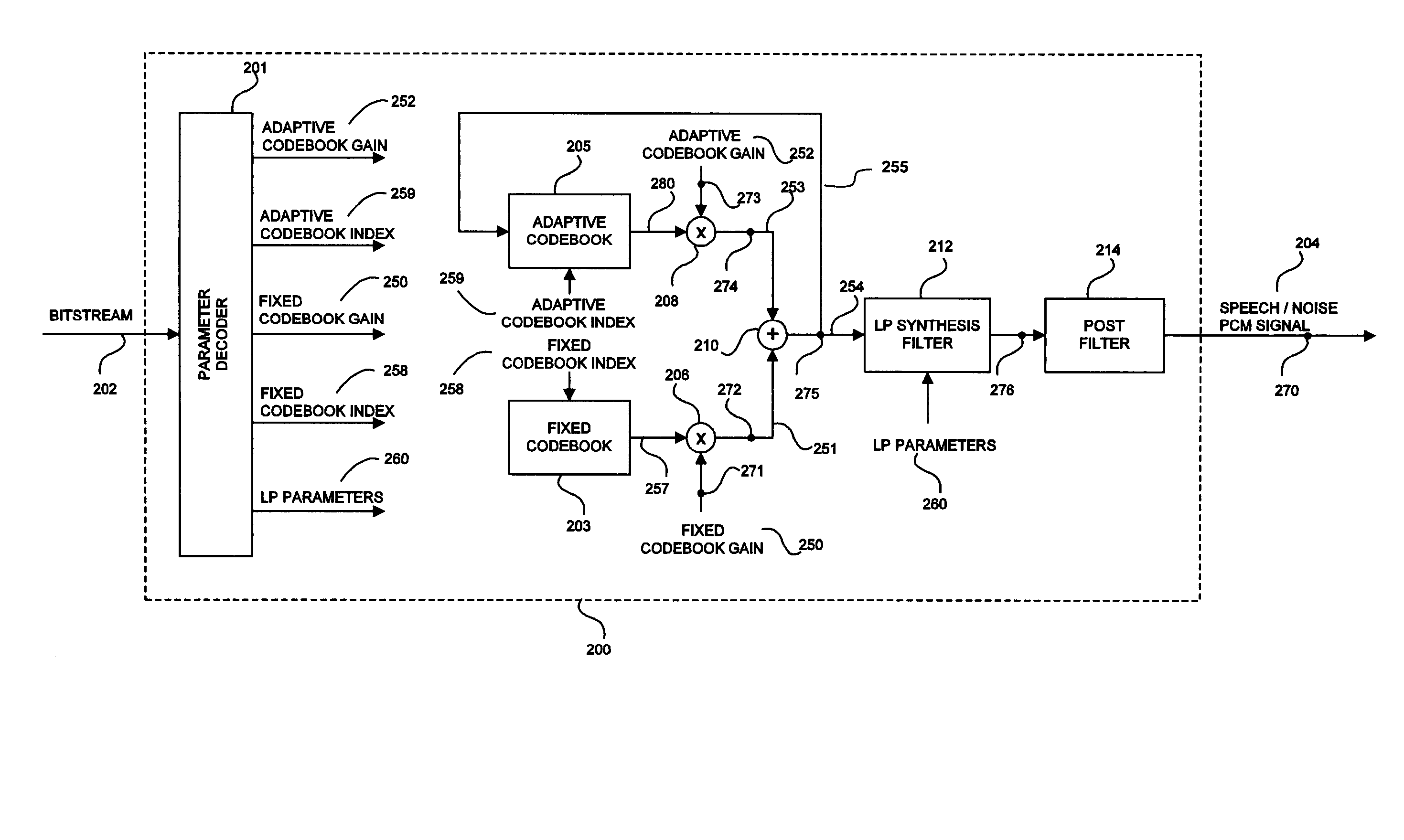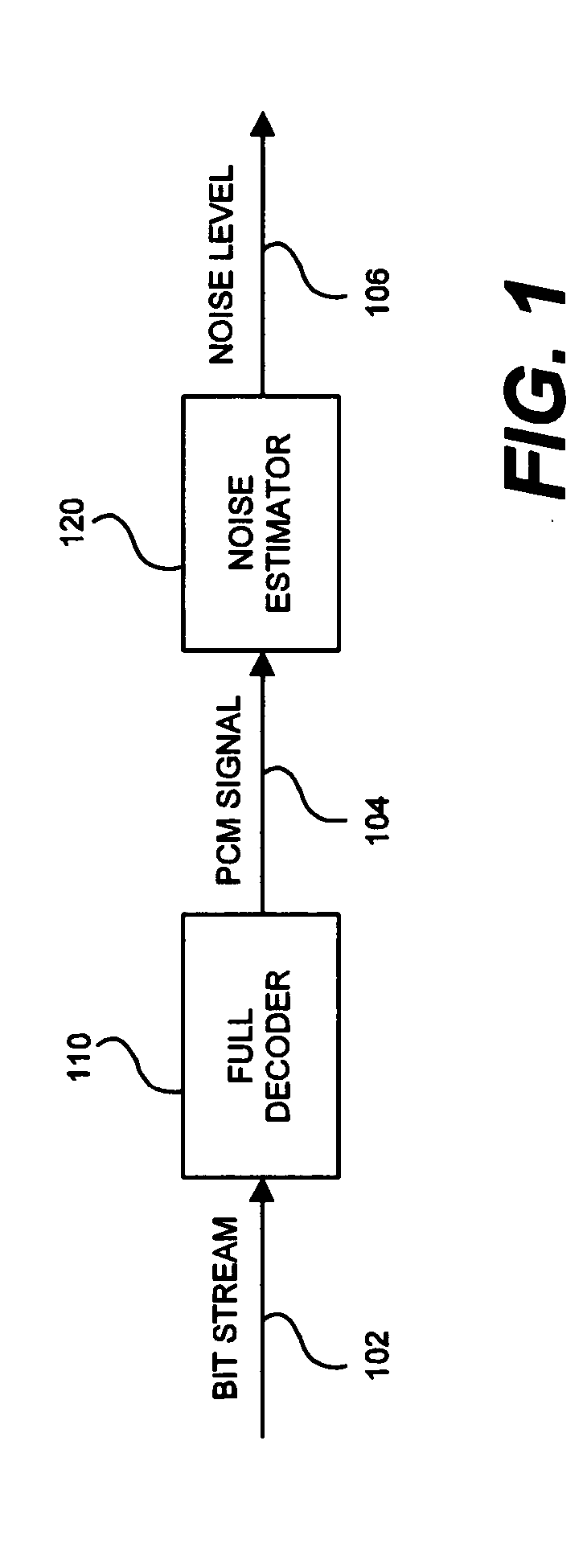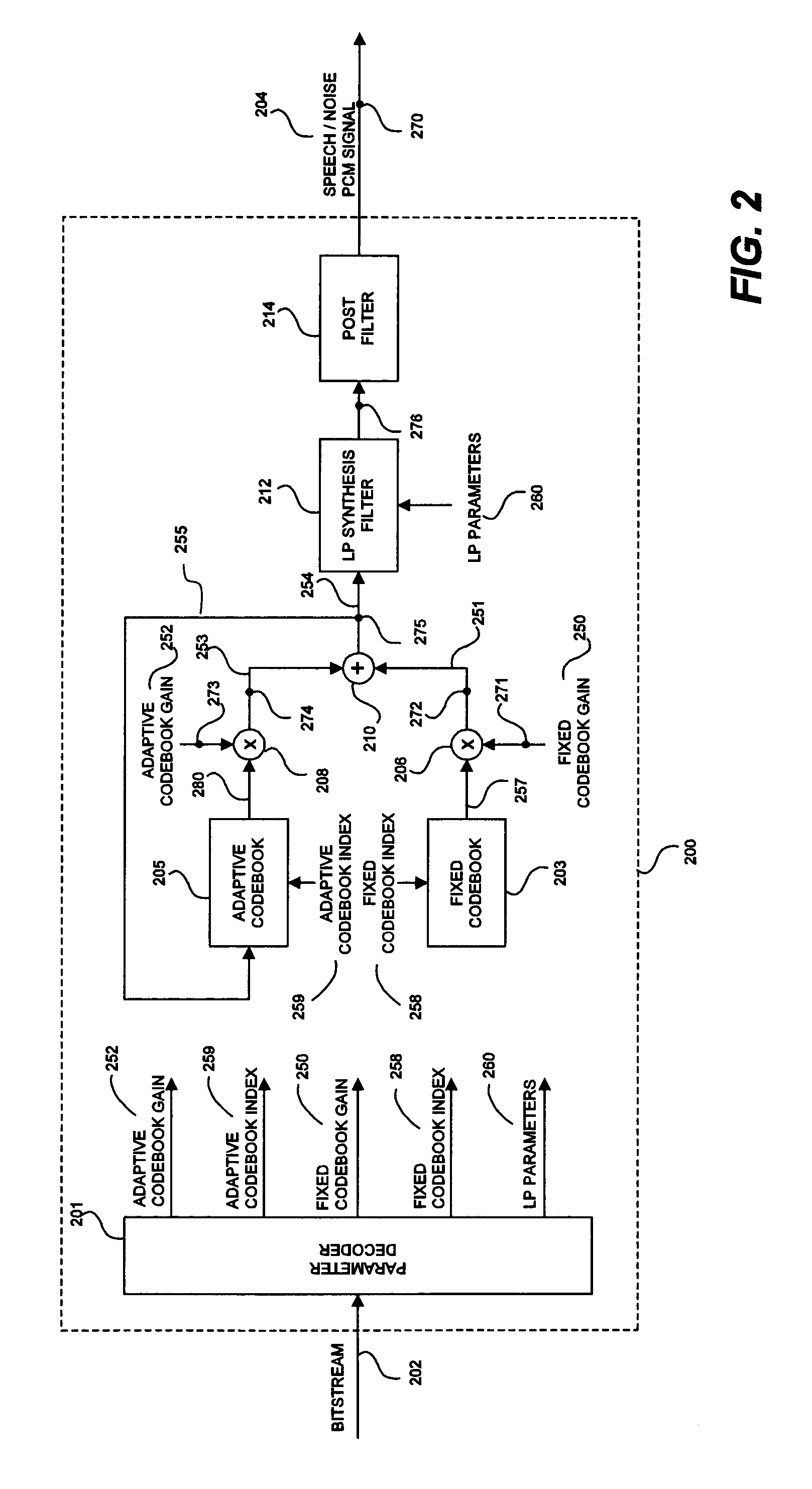Method and apparatus for estimating noise in speech signals
a speech signal and noise estimation technology, applied in the field of speech signal processing, can solve the problems of inability to free up transcoders or tandem free operations, inability to network-located signal processing and signal enhancement, and inability to achieve speech quality improvement, so as to reduce computational complexity and power requirements, the effect of reducing computational complexity
- Summary
- Abstract
- Description
- Claims
- Application Information
AI Technical Summary
Benefits of technology
Problems solved by technology
Method used
Image
Examples
Embodiment Construction
[0015] Although the illustrative embodiments of the invention are applicable to the well-known GSM (Global System for Mobile Communications) cellular system standard using Adaptive Multi-Rate (AMR) speech coders, and will be described in this exemplary context, those skilled in the art will understand from the teachings herein that the principles of the invention may also be employed in other applications that require noise estimation. For example, the invention can be used in other standards-based cellular communication systems, Voice-over-Internet (VoIP) applications, and so on.
[0016] A brief description of a conventional approach for estimating noise in a GSM-based network employing AMR speech coders will now be provided with reference to FIGS. 1 and 2 to provide a foundation for understanding the principles of the invention. More specifically, FIG. 1 illustrates a conventional approach for estimating the noise level from a speech signal. In this example, bit stream 102 represen...
PUM
 Login to View More
Login to View More Abstract
Description
Claims
Application Information
 Login to View More
Login to View More - R&D
- Intellectual Property
- Life Sciences
- Materials
- Tech Scout
- Unparalleled Data Quality
- Higher Quality Content
- 60% Fewer Hallucinations
Browse by: Latest US Patents, China's latest patents, Technical Efficacy Thesaurus, Application Domain, Technology Topic, Popular Technical Reports.
© 2025 PatSnap. All rights reserved.Legal|Privacy policy|Modern Slavery Act Transparency Statement|Sitemap|About US| Contact US: help@patsnap.com



